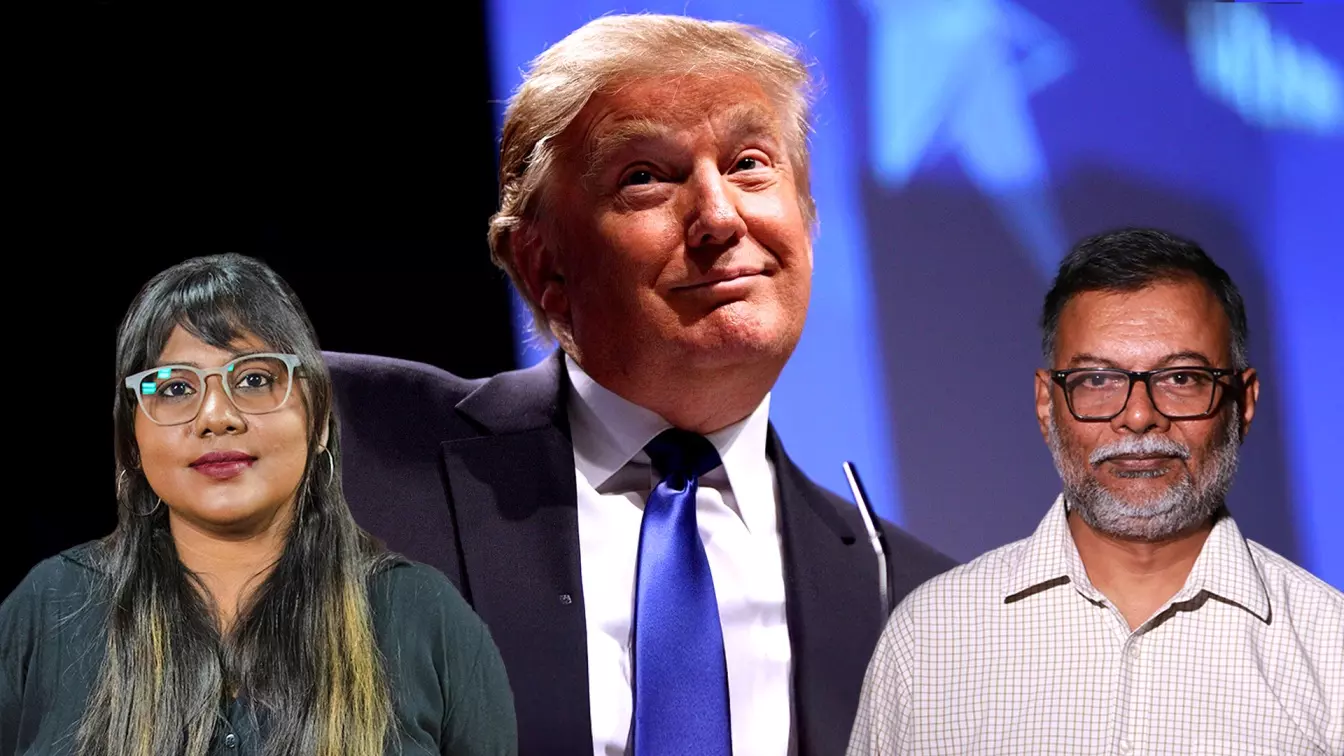
Is Trump losing control of global diplomacy?
Empty threats, mixed signals on Russia and China: Trump’s foreign policy decoded
Trump issues veiled ultimatum to Russia, adopts contradictory stance on China. Is it a strategic pivot or hollow posturing?

US President Donald Trump has stirred global attention with his erratic remarks on Russia and China. While issuing vague ultimatums over the Ukraine war and floating the idea of visiting China even as he criticises its trade practices, Trump has left observers questioning the coherence of his foreign policy. The Federal spoke with its Editorial Consultant, KS Dakshina Murthy, to decode the implications.
Trump recently said Russia has 10–12 days to stop the war in Ukraine or face consequences. What do you make of this ultimatum?
It’s clear that Donald Trump has made little headway on resolving the Russia-Ukraine war since assuming office. After coming to power on January 20 in his second term, he bulldozed Ukrainian President Volodymyr Zelenskyy, something the world saw unfold, and expectations were high that the war would end quickly. But it didn’t. In fact, the situation has worsened.
Also read | Trump slams India-Russia ties; says 'they can take their dead economies down together'
Zelenskyy didn’t forgive the way Trump humiliated him, and soon after, Ukraine carried out a much-talked-about drone attack deep inside Russia. Since then, the conflict has escalated. Trump seems to have overplayed his hand with Zelenskyy and may have lost the initiative. His recent warnings to Putin appear more desperate than strategic. You simply can’t arm-twist Russia into ending a war. Trump is clearly losing control of the situation.
Is Trump risking dragging the US into a war?
Trump’s belief that he could resolve the conflict was based on his relationship with Putin, though it’s unclear how close they really are. That was the optimism driving his initial approach. But it hasn’t worked. Former Russian President Dmitry Medvedev even warned that Trump’s ultimatum game could lead to a larger conflict involving the US.
Ukraine is already backed by the US and its NATO allies through arms, ammunition, and financial aid. Trump earlier threatened to cut off that support to force peace, but that didn’t happen either. Now he’s talking about imposing more secondary sanctions on Russia and increasing tariffs on Russian products, though most of these are already sanctioned.
He is likely trying to pressure friendly countries like India, which continues to buy crude from Russia, as well as China, which supports Russia. The idea seems to be to isolate Russia diplomatically, but whether that’s possible is a big question.
How does Trump’s approach differ from Joe Biden’s on the Ukraine war?
Joe Biden’s push to bring Ukraine into NATO played a key role in triggering the war. Putin repeatedly warned that such a move would harm Russia’s strategic interests by bringing NATO to its doorstep. Despite the warnings, Biden stood firm. Eventually, Russia invaded Ukraine.
Once the war began, Biden and NATO allies fully backed Ukraine with arms and aid, refusing to compromise until Putin stepped back. Biden’s approach was clear and consistent.
Trump, by contrast, promised to end the war in a day but realised after taking office that it wasn’t possible. He tried a different tack, using diplomacy and his personal ties with Putin and pressuring Zelenskyy to reach a ceasefire. That also failed. If diplomacy doesn’t work, Trump may end up following Biden’s path: aligning with Europe and ramping up pressure on Russia.
Trump recently denied seeking a summit with Xi Jinping, yet hinted he might visit China. How do you interpret this contradictory stance?
There’s no clarity in Trump’s China policy. He talks tough on trade, raises the possibility of a China visit, then backtracks. It reflects confusion, not strategy.
Trump sees China as a developing country that can be pushed around. But he also knows that the US and China are deeply intertwined economically. Any move to target China could backfire. That’s why he often threatens steep tariffs, 140%, 150% or more, but later softens.
Recent talks have paused the tariff issue. Right now, the US imposes 30% tariffs on Chinese goods, and China retaliates with 10%. This trade tension is likely to continue. China is resisting Trump’s moves effectively. Unlike other nations he could push around, like Canada or some in Europe, China is a different ball game altogether.
This leads to frequent back-and-forth, and frankly, the world is watching Trump with amusement. It’s become somewhat embarrassing for the US.
Trump seems to be sending mixed signals to both Russia and China. Is this strategic ambiguity or just inconsistent messaging?
It stems from Trump’s personality. Earlier presidents handled diplomacy through back channels. Talks would happen quietly, out of the public eye. But Trump shoots from the hip. We’ve seen it before with India, Pakistan, and now again.
Also read | Trump says China trip is 'not too distant' as trade tensions ease
He often makes tall claims that don’t hold up to fact-checking. Sometimes he even admits he made a mistake. His approach to international diplomacy is a textbook example of how not to do it.
By repeatedly threatening Putin and warning China, Trump ends up cornering himself. He can’t act on the threats he makes. This cycle may eventually force him to tone down and become more cautious. But that depends on whether he acknowledges that his current approach isn’t working.
The content above has been generated using a fine-tuned AI model. To ensure accuracy, quality, and editorial integrity, we employ a Human-In-The-Loop (HITL) process. While AI assists in creating the initial draft, our experienced editorial team carefully reviews, edits, and refines the content before publication. At The Federal, we combine the efficiency of AI with the expertise of human editors to deliver reliable and insightful journalism.

